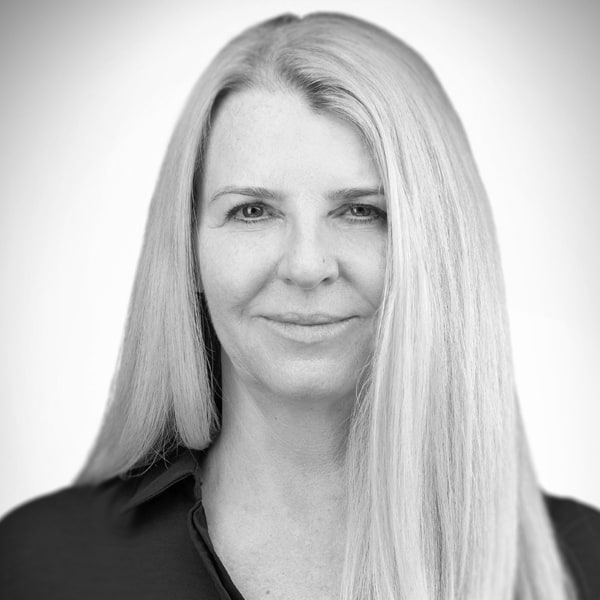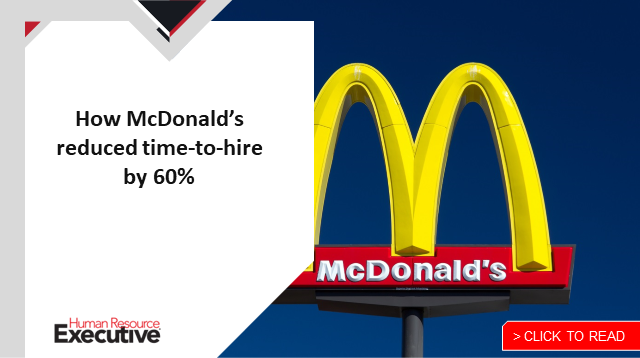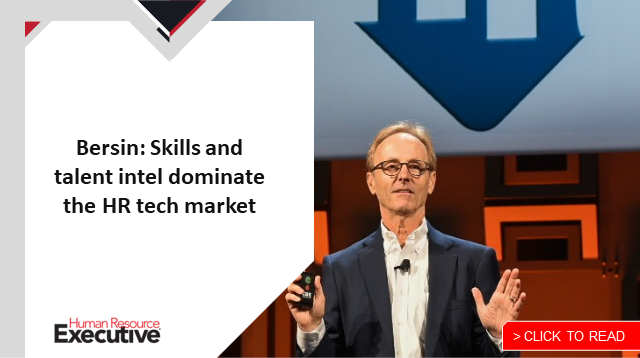Suzanne Harris is the first to admit that she is not a data scientist.
But as vice president of HR for NexusTek, an IT-focused managed services firm with 300 employees in 37 states, Harris and her team have had to grow increasingly comfortable with gathering and analyzing internal and external employee data to help their company make vital business decisions.

“I’m never going to be a financial planner, analyst or a data scientist,” she tells HRE. That said, in 2019 she and her HR team began using people data analytics from HCM provider ADP in what she calls “bite-sized chunks” to start, and then in larger amounts, to perform in-depth people data analysis.
The days of scrutinizing employee data in a spreadsheet to generate a quarterly report are over. Today’s HR leaders must become more adept at gathering, analyzing and sharing people data with not only the C-suite but also with managers and supervisors to improve employee experience and to attract, retain and develop valuable talent. The demands of the current work climate require that employers use a more informed approach to meet heightened expectations around EX, DE&I, hiring, compensation and other vexing HR issues.
“The importance of understanding the employee experience and the employee side of the business, I think, is now obvious,” said Anna Tavis, clinical professor and academic director of HCM at New York University, in a Harvard Business Review report, “Sharing People Data Outside HR to Drive Business Value.” The report was sponsored by analytics provider Visier. “It’s no longer the old-school thinking. I think everyone understands the importance of managing employees right. That comes from data.”
HR leaders agree. The HBR and Visier research found that 54% of advanced users of people analytics reported achieving positive business outcomes and 74% of advanced users examine data to analyze the workforce proactively. Perhaps more telling, the audience for people data is no longer limited to the C-suite. According to Visier and HBR, 50% of advanced users of people analytics count managers and supervisors as consumers of this data, compared with just 28% of organizations that are new to using people data on a regular basis.
“That’s how [senior and middle management] make their decisions, how they understand trends and what’s happening in their organization,” says Harris.
 People data is more than a collection of information on employee compensation, staff turnover or the racial, gender or sexual orientation of workers on the company payroll. It can highlight burnout trends, gauge employee satisfaction and engagement, and determine the skills that employees need to grow their careers. People data also can help employers determine appropriate pay scales based on geography and suggest whether potential talent pools have the proper background and education to work for the employer.
People data is more than a collection of information on employee compensation, staff turnover or the racial, gender or sexual orientation of workers on the company payroll. It can highlight burnout trends, gauge employee satisfaction and engagement, and determine the skills that employees need to grow their careers. People data also can help employers determine appropriate pay scales based on geography and suggest whether potential talent pools have the proper background and education to work for the employer.
“People data equals business data,” says Paul Rubenstein, chief people officer of Visier. He likens HR’s current use of people data to the days when chief financial officers began using financial data from multiple sources to inform vital business decisions.
“The good HR leaders are learning to master the data to tell stories and create a rhythm of accountability,” he says.
Harris says this approach can not only help data-wary HR leaders achieve greater insight into their workforce, but people data can also make HR more valuable to senior management.
“You’re not just seen as the HR folks who make sure people get paid and oversee performance reviews,” she says, “because those people at the top love data.”
Data analysis: The new HR job skill
Using people data from multiple sources—recruitment applications, candidate interviews, onboarding tools, performance reviews and other HR systems—has become a key requirement of today’s HR leader. It can also lead to transformation for tradition-bound organizations that are eager to thrive in the current marketplace.

At Hearst, Debra Robinson provides HR technology support and services to five HR leaders and their teams who work in the IT and digital and broadcast media units at the legendary media and information services company. Since the company’s recent upgrade to Oracle HCM technology, these leaders and their teams deliver monthly people data reports to Hearst’s C-suite and the presidents of each business unit.
“We started providing these people reports every week because they never had this data before,” says Robinson, senior vice president and chief information officer of Oracle technology and operations. That cadence soon slowed to once a month to avoid overloading leaders while allowing them time to absorb the report’s critical data: retention numbers, employee learning and upskilling usage, and other key points that help them see what’s happening inside and outside their organization.
“They can see how they’re doing against other businesses,” says Robinson. “It’s critical.”
During the pandemic, Hearst moved to Oracle Fusion Analytics Warehouse, a solution that provides analytics for Oracle Cloud applications. After training remotely, Hearst’s HR leaders were able to provide Hearst President and CEO Steven R. Swartz with deep people data in the early days of the pandemic, at a time when he promised that no Hearst employee would be laid off.
“I was tracking every week how many hires, how many people left, and if it was voluntary and involuntary and the cost associated with that,” says Robinson.
The wealth of data used in the modern workplace combined with sophisticated and easier-to-use data tools has expanded the audience for people data findings. In fact, making people data accessible to mid-level managers as well as senior management is now the expectation of HR leaders, according to Yvette Cameron, senior vice president of global HCM product strategy for Oracle, who likens HR’s need for people data to consumers’ desire to purchase affordable airline tickets online. “People are accustomed to absorbing analytics as a consumer,” she says. “The challenge is when you put it in a business environment, it’s been confusing and hard for people.”

Cameron says that Oracle’s technology has evolved to allow HR leaders to present data findings via visualizations while the solution’s built-in AI can explain what the visualizations mean.
“We can tell you the story behind the data,” she says.
In-depth people analytics is not just for large global enterprises with a dedicated chief people data officer. Smaller firms, like Harris’ NexusTek, also are taking advantage of deep analysis of their people data.
“We’ve heard the age-old HCM notion that as you go into the upper stratosphere of the market segment, your needs are more complex, you need more data and data analytics is driving more of your decisions versus if you’re a 20-employee client,” says Aaron Smith, senior vice president of global product management and UX for ADP. But even a small business needs access to external people data to retain and engage their employees and compensate them fairly, he says.
Harris and her team, for example, do just that when they examine employee turnover rates by geographic region and use ADP salary tools to benchmark compensation plans against companies of similar size, especially during due diligence procedures for a company acquisition.
 “When we were trying to hire this past couple of years, we were able to use ADP’s tools to resource nationally and remain within our budget,” says Harris. “If you’re acquiring a company, you don’t want to discover that everybody’s making 1.5 times more than the people at your company. During due diligence, we’re able to see if they had any outliers in pay.”
“When we were trying to hire this past couple of years, we were able to use ADP’s tools to resource nationally and remain within our budget,” says Harris. “If you’re acquiring a company, you don’t want to discover that everybody’s making 1.5 times more than the people at your company. During due diligence, we’re able to see if they had any outliers in pay.”
Harris admits to being intimidated when she and her team began using this data in 2019.
“When these tools became available to me, I was both excited and intimidated. I knew that it would be great information, but [I thought], am I going to be able to do this?” she recalls. “I just said, ‘I’m not going to overthink this and I’m just going to start small.’” She started with ADP’s salary benchmarking tool and she and her organization are now analyzing employee retention for its team of remote engineers via the HCM’s dashboards.
And today, Harris is an enthusiastic consumer of people data analytics, eager to use it in future HR initiatives. “I’ve been building metrics little by little,” she says, “to get a bigger picture of our workforce.”
Registration is open for HRE‘s upcoming HR Tech Virtual Conference from Feb. 28 to March 2. Register here.
The post Why HR must embrace people data and its related technology appeared first on HR Executive.